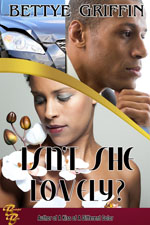NOTE: A main clause is the section of the sentence that could stand alone as a complete sentence.
Common Comma Errors
Comma splice
A comma splice is when you have two main clauses separated by a comma. Do not trust grammar check, it will not always catch a comma splice. For example, I put a comma splice in the previous sentence that my grammar check missed.
To solve a comma splice, you should either use a period, a semi-colon, or a comma + a coordinating conjunction (and but for nor or so yet).
Do not trust grammar check. It will not always catch a comma splice.
Do not trust grammar check; it will not always catch a comma splice.
Do not trust grammar check, for it will not always catch a comma splice.
Fused sentence
A fused sentence is when two or more main clauses are connected without any punctuation separating them. Below is an example of a fused sentence that my grammar check missed.
Do not trust grammar check it will not always catch a fused sentence.
Run-on sentence
Do you know anyone who talks all the time, and you wish they would be quiet a few seconds, but you know they think they will die if they are quiet for longer than a breath, yet you still pray for a miracle, so now you are stuck listening to them go on and on.
The above is a run-on sentence. Grammatically correct. Punctuation correct. The only problem is it runs on and on.
Use a Comma…
To separate main clauses linked by a coordinating conjunction
(and but for nor or so yet)
(main clause), (coordinating conjunction) (main clause).
The run on sentence gives several examples of how to use the comma along with a coordinating conjunction to separate main clauses. The exception to the rule is if you have a short sentence. In that case, the comma is optional. Just be consistent within your piece of work.
The milk spilled and the baby cried. The milk spilled, and the baby cried.
When in doubt, throw in the comma.
To set off most introductory elements
An introductory element can be a clause, expression, or phrase that introduces the main clause. When speaking, these usually require a pause.
(introductory clause), (main clause).
When I felt sleepy, I went to bed.
Running, he tripped over the garden hose.
Note: A comma is not required for a short introductory phrase, but it is usually added for clarity.
To set off non-essential elements
A non-essential element is a word or phrase that interrupts the sentence and does not affect the meaning of the sentence. The best way to recognize a non-essential element is by moving it within the sentence.
(non-essential element), (main clause).
(portion of main clause), (non-essential element), (remainder of main clause).
(main clause), (non-essential element).
Surprisingly, comma usage isn’t too difficult to learn.
Comma usage, surprisingly, isn’t too difficult to learn.
Comma usage isn’t too difficult to learn, surprisingly.
To set off non-essential supplementary information
Supplementary information adds detail to your sentence and can be either restrictive (which means you must have it in order for the sentence to make sense) or non-restrictive (non-essential). Only use commas with non-essential supplementary information.
For example:
(portion of the sentence), (non-essential supplementary information), (remainder of sentence)
I wrote a tutorial about commas, which took me two hours to write, for my blog.
If you took out the non-essential supplementary information, the sentence would not lose any meaning. For example: I wrote a tutorial about commas for my blog.
Here is an example using restrictive supplementary information.
The authors who took writing seriously rose to great heights.
If you took out the supplementary information, the sentence would lose its meaning.
The authors rose to great heights. Which authors?
To separate items in a list
Separate a series containing three or more equally important words, phrases, or clauses with commas. The last item should also have a coordinating conjunction preceding it.
The comma preceding the coordinating conjunction is optional in creative writing but mandatory in most academic writing. Whether you choose to use the final comma or not, be sure to be consistent throughout your manuscript. Below are examples:
Separate a series containing three or more equally important words, phrases, or clauses with commas.
Separate a series containing three or more equally important words, phrases or clauses with commas.
To separate coordinate adjectives
Use coordinating conjunctions or commas to separate two or more adjectives that modify the same noun if you can change the order of the adjectives without changing the meaning.
She was a warm, loving person. She was a loving, warm person.
Notice in the above example you could easily switch the order of the adjectives. If you have a sentence where you could not switch the adjectives, then do not separate them with a comma.
She asked for the new registration form.
To set off contrast elements
When words, phrases, or clauses are used to show a sharp contrast or what is not, place a comma between the elements. The best way to understand this rule is to see it in action.
The roller coaster ride was fun, and scary.
He is from Nigeria, not from Liberia.
Note: When using the word but to show contrast, the comma is optional if you do not have a main clause on both sides of the but. Just make sure you are consistent throughout your paper:
The roller coaster ride was fun but scary. The roller coaster ride was fun,but scary.
To set off tag sentences
A tag sentence is a short sentence/statement that conveys an opinion and is placed at the end of the main sentence. Place a comma between the main sentence and the tag sentence/statement.
We have two more weeks of class, I think.
How many weeks of class are left, two?
To set off direct address
When directly addressing someone or a group, set it off with commas.
(direct address), (main clause).
(main clause), (direct address).
(portion of main clause), (direct address), (rest of main clause).
Betty, hand me the deck of cards. Children, be quiet.
Hand me the deck of cards, Betty. Be quiet, children.
When you’re finished shuffling the cards, Betty, let me know.
To set off a non-essential appositive
An appositive is a word or phrase that renames the noun directly preceding it.
noun, non-essential appositive, rest of sentence.
Deatri King-Bey, the author of this post, is from Illinois.
To prevent misreading
Sometimes a comma is needed to prevent misreading or add clarity to a sentence. When using this rule, ensure you actually needed to use the comma.
Running, he tripped over the garden hose.
That’s All, Folks
Easier than you thought it would be, huh? Don’t be intimidated by grammar and punctuation. I always recommend that authors and editors take a refresher grammar/punctuation course every few years.
Happy Writing
Deatri King-Bey
If you found this post helpful, please use the share buttons to spread the word about it.

Don’t have a copy of Become A Successful Author? What are you waiting for? Become A Successful Author will be used in the “How To Write That Novel” course at Chicago State because it covers everything from branding to writing to editing to formatting and uploading electronic and print books to marketing and so much more. Your time is money. Look at all the time, thus money, you’ll save by ending your search for answers: Purchase Become A Successful Author (eBook) for only $4.99 from: Amazon (US), Amazon (UK), Barnes & Noble or print copies for only $7.99 by using the Contact page of this website and tell Dee know how many copies you’d like and shipping address. She’ll email the ordering information.
 It seems only another writer will understand the plight of an author when they are trying to juggle their everyday life with a writing career. If you decide to write when you have time, you will never write because there will always be something that will interfere with your writing.
It seems only another writer will understand the plight of an author when they are trying to juggle their everyday life with a writing career. If you decide to write when you have time, you will never write because there will always be something that will interfere with your writing.








